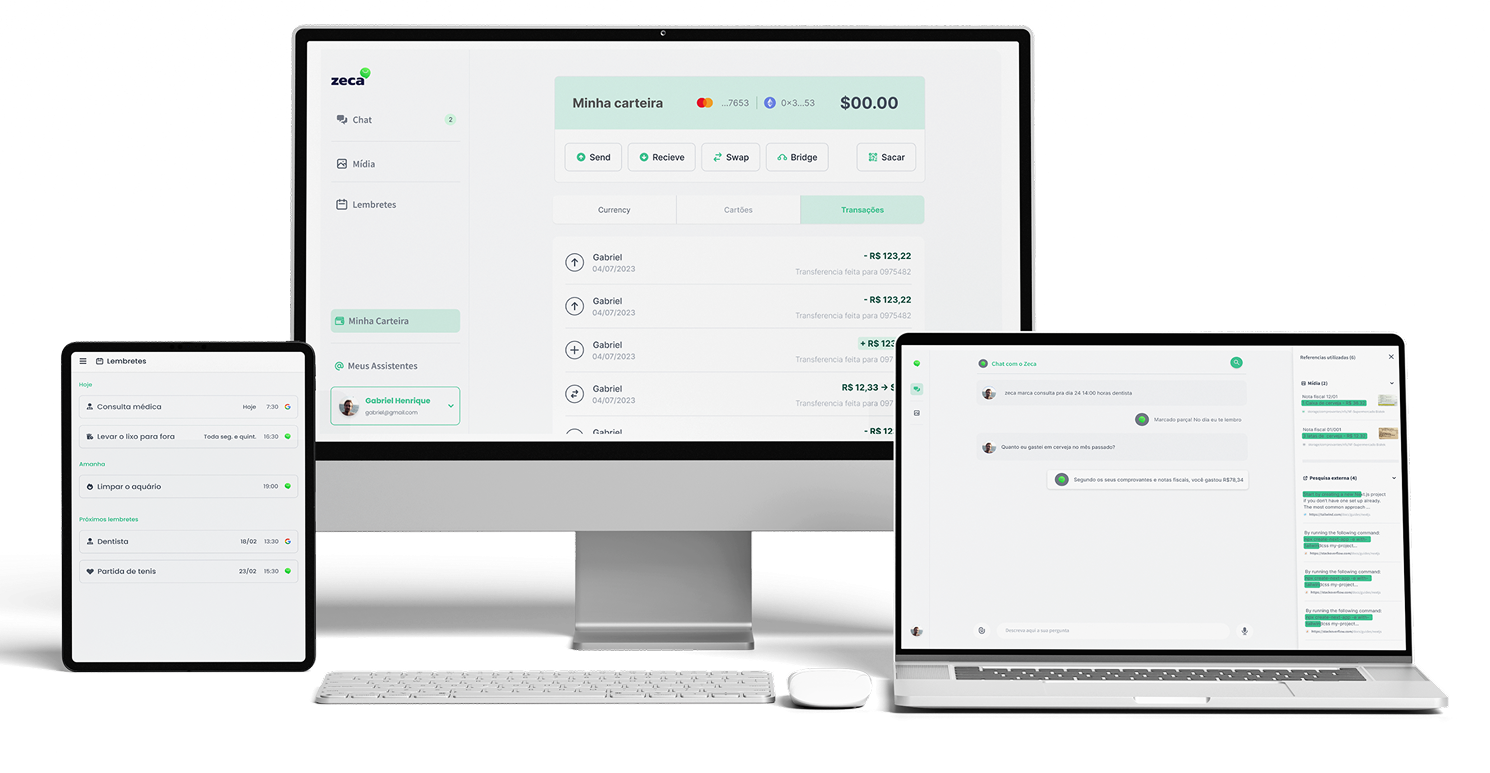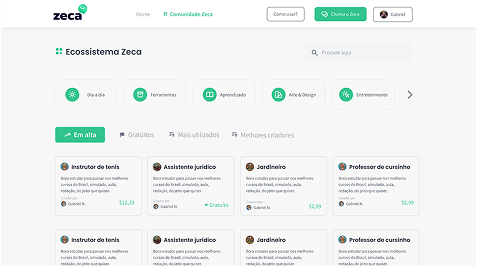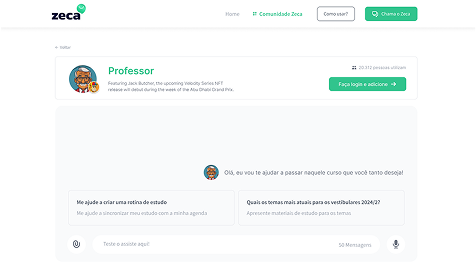ZECA
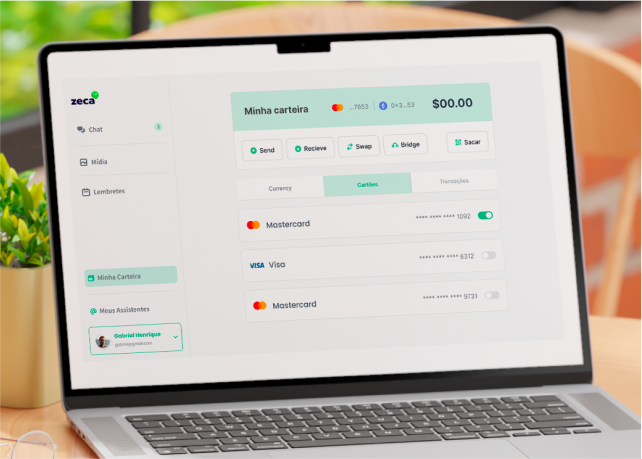
DISCOVERY & RESEARCH
CONTEXT & OBJECTIVES
Zeca, which eventually became Looli, emerged from the idea of creating a virtual assistant that would work and be durable, since at the time, traditional assistants were easily forgotten by their users after a few weeks of use.
We started our research by creating a benchmark with the features and advantages that an assistant brings. In conjunction, we also conducted a benchmark of traditional products that also delivered the same things, without being assistants. With our research, csd matrix and benchmark we were able to build our initial personas and storytellings in order to understand why users quickly detach.
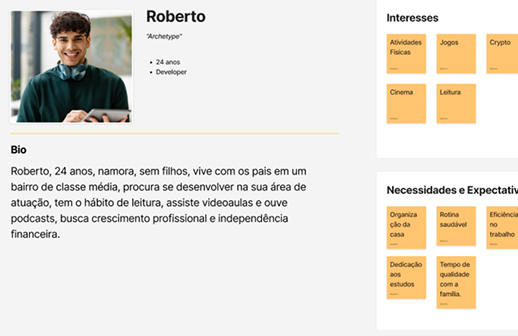
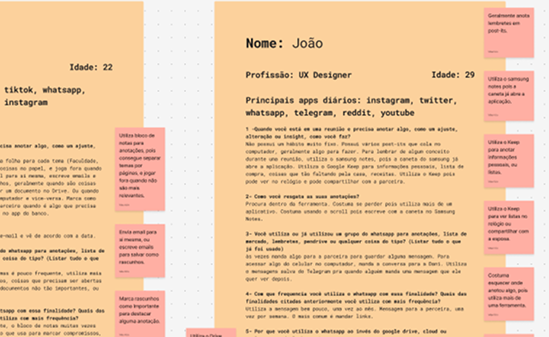


USER INTERVIEWS
With initial research in hand and many doubts, we created an interview script with users to understand why there was so much abandonment of products like virtual assistants, organizers or time/task managers — and thus better consolidate our personas and narratives.
With the help of an affinity diagram, we organized the interview results very clearly. The interviews brought great insights and solved several doubts.
The main reason for abandonment was simple, but profound: users needed to insert the app into their routine, because the app did not naturally integrate into their routine.
THE BIG INSIGHT
The most important insight the interviews brought was: for Brazilians, there already is a product that kills the needs of an assistant — without being an assistant — and was already naturally inserted in everyday life: WhatsApp. With everything done in the "Brazilian way": Write down consultation date? Throw it in the WhatsApp group. Save photos? Send it there. Make a grocery list? Also there. And so on.
We then started from the principle that, regardless of how the app would be, it would have to integrate with WhatsApp — maybe as a user, maybe being inserted into a group. And from that, we revised and consolidated our personas and storytellings.

BIG CHALLENGE, CLEAR OBJECTIVE
In the end, we had a product with considerable technological challenges, but with a clear objective: integrate with WhatsApp so that AI could interpret conversations and images, categorizing and automating actions such as:
- • Organize links
- • Group and categorize images
- • Schedule appointments automatically
- • Integrate with smart home
- • Various other daily tasks
IDEATION & DEVELOPMENT
ORGANIZATION & FLOWS
With the CSD matrix doubts answered in the interviews and insights collected, we decided to use a mind map to organize the functionalities in categories and, from that, build the user flows that would guide the beginning of development.
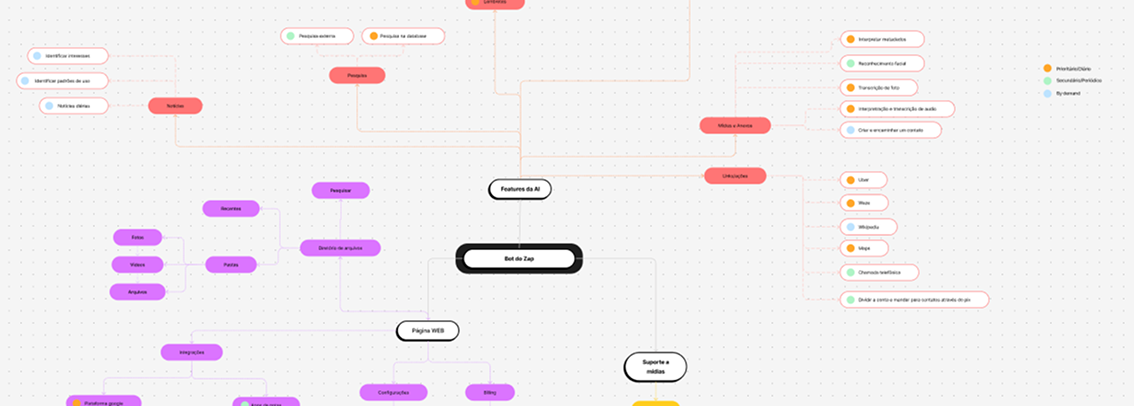

PRODUCT EVOLUTION
We started with a simplified UI, totally focused on WhatsApp integration. Later, we evolved to a complete app, integrated with our Web3 product, allowing that, in addition to dealing with daily tasks, AI also helped in the user's financial life: paying bills, receiving amounts, charging, and even investing — both in Web2 and Web3.
ASSISTANTS ECOSYSTEM
In addition, we thought of a world of assistants that could be mentioned or tagged in the conversation. Anyone could create an assistant in an 'assistant store'. Being possible to create categories, most voted, most used, etc.
THE PRODUCT
